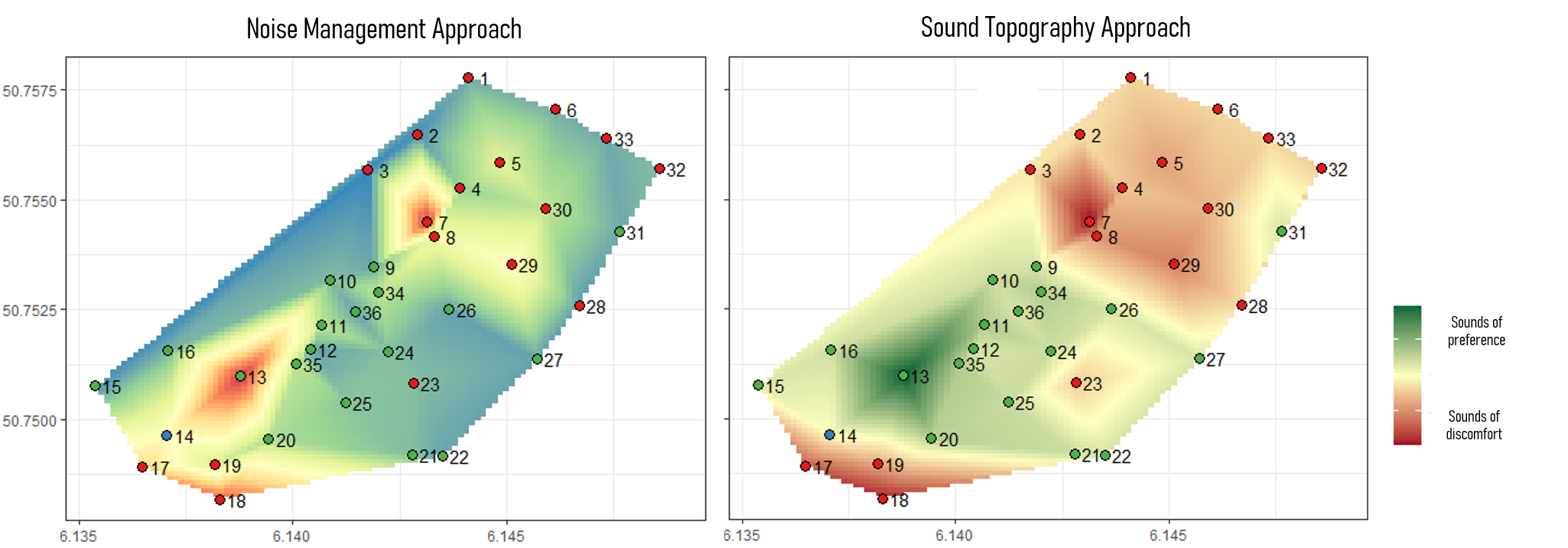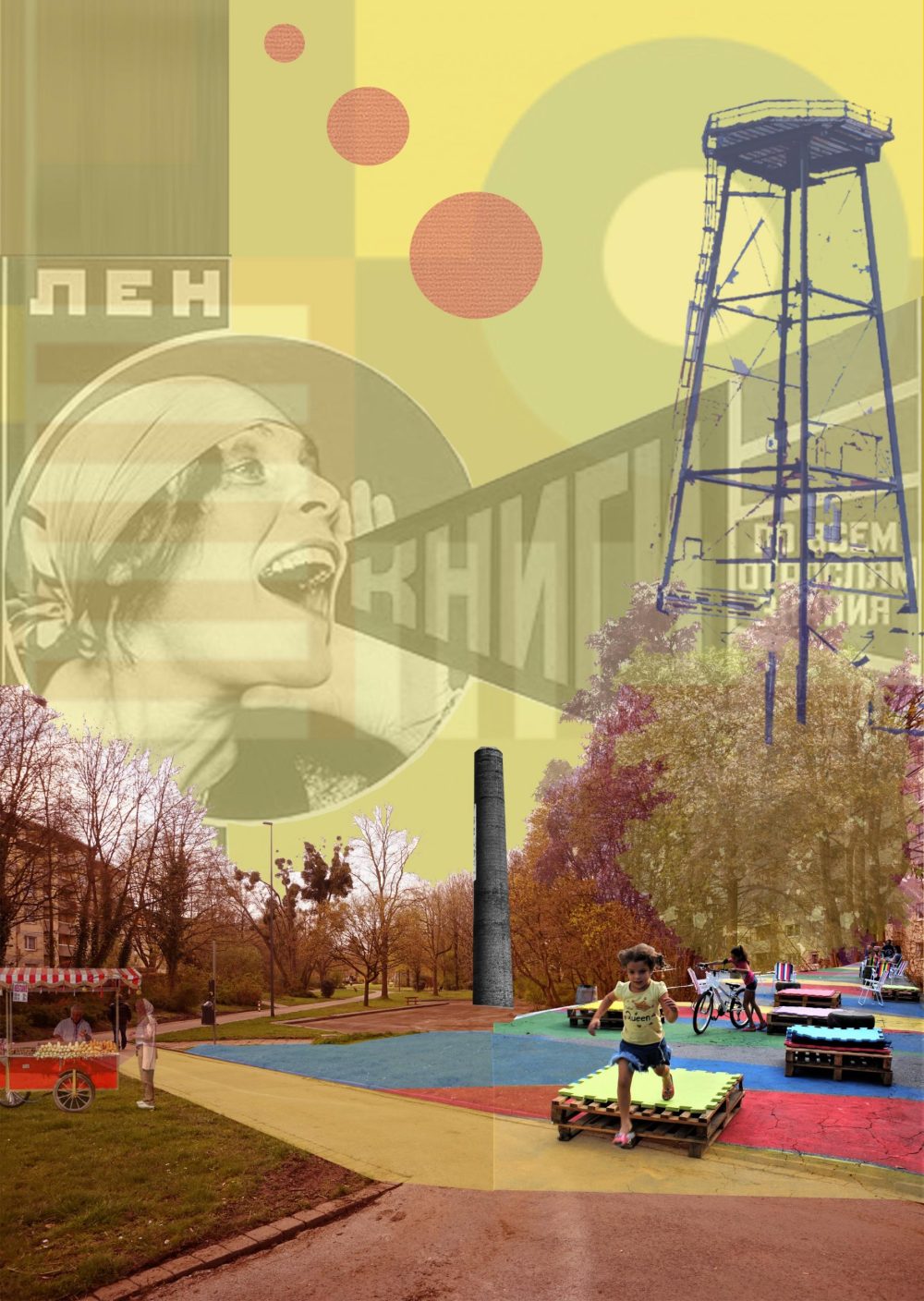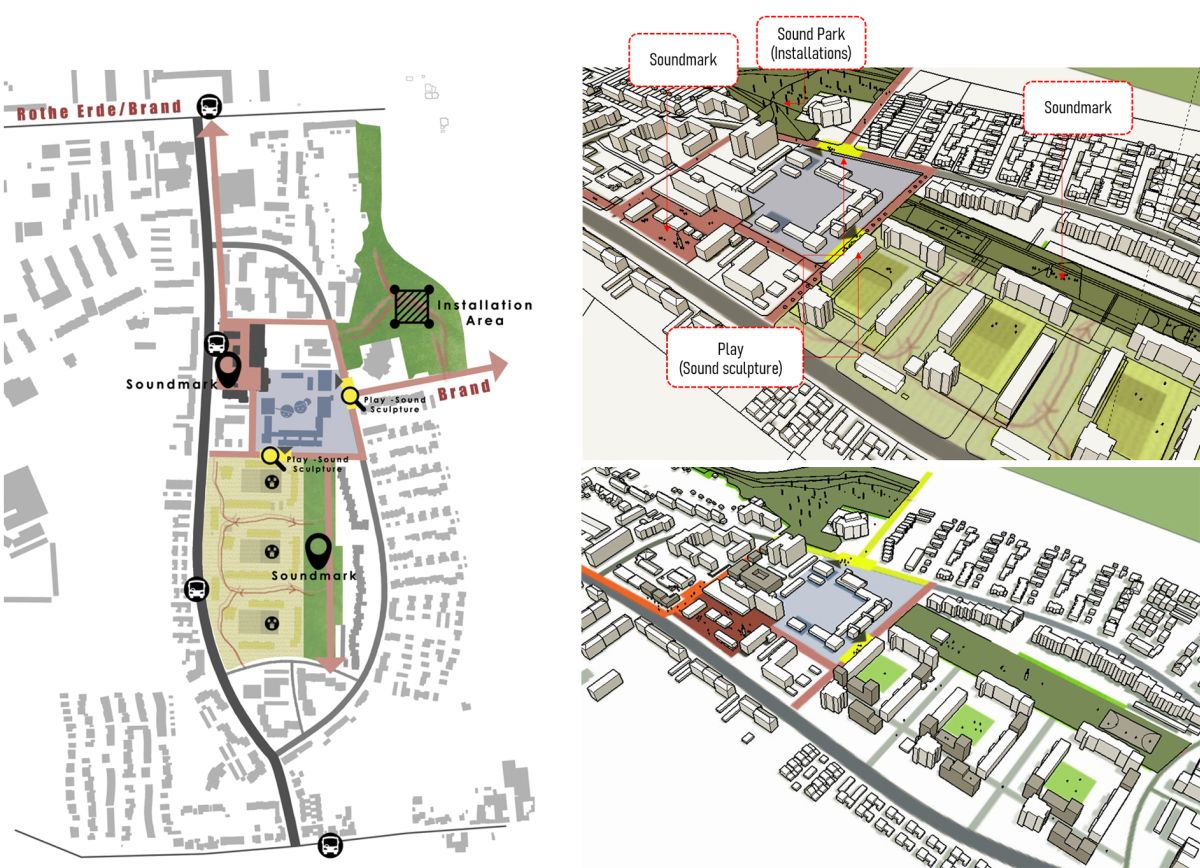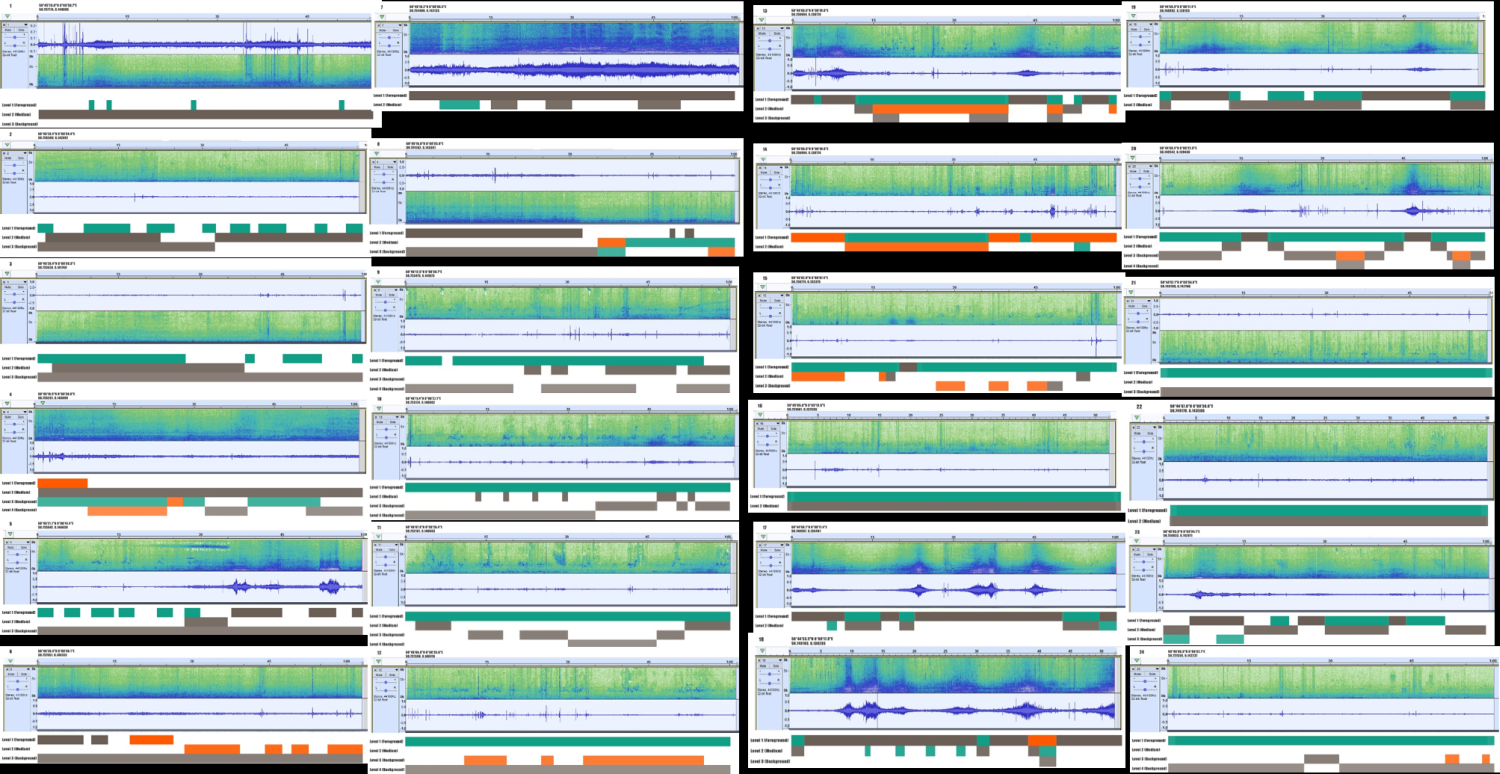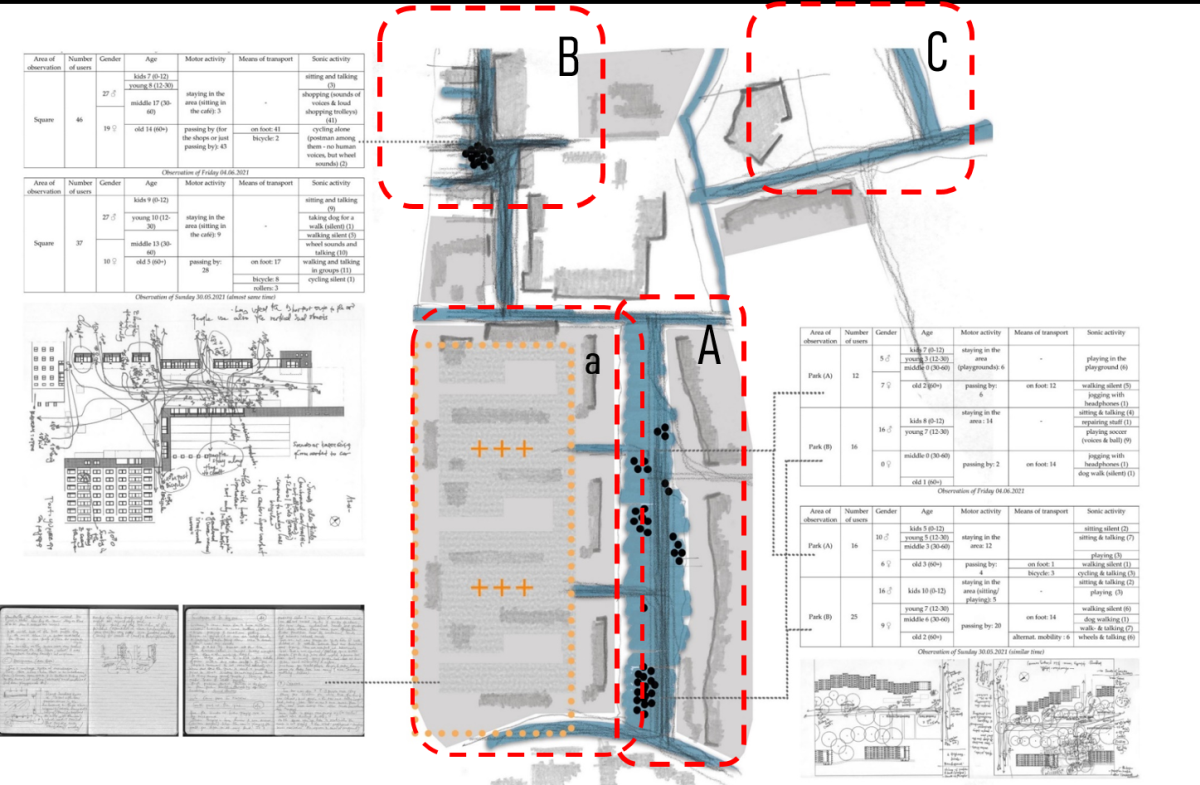Enhancing social life in public space via Sound Art. Driescher Hof (Aachen, Germany) through the Soundscape perspective
A project by Stella Moulara
Integrated Project I
Lecturers: Univ.-Prof. Dipl.-Ing. Christa Reicher, Dr. ir. Ceren Sezer
summer semester 2021
The Covid-19 lockdown and social distancing measures have dramatically limited the use of public space and social interaction. This condition has influenced well-being and mental health, especially in disadvantaged neighborhoods with vulnerable communities such as elderly and unemployed population. The pandemic has obliged us to re-think about the role of public space as an accessible, porous and connective ground for social integration and cohesion, which is necessary to build social resilience in the times of instability. An inseparable element of public space is sound. Controversially to big scale noise-management approaches, soundscape focuses in the small scale, where sound can have reduce people’s stress and anxiety, increase sociability and the feeling of belonging to the society, urge interaction and happiness. A spatial proposal based at this positive approach to sound which is meant under the term ‘soundscape ’is the aim of this project.
The current research-based design project studies the soundscape of public spaces in Driescher Hof – Aachen, which is considered as vulnerable due to the emigrational background of its residents and the high rates of intergenerational poverty, unemployment, and single member households. The analysis part includes field- and deskwork in order to understand who and how uses the public space in Driescher Hof, decode possible interactions, observe how the sonic environment of the district evolves during its everyday life and study how sounds are reflected on the user’s behavior. Secondary information (socio-economic and demographic analysis) was combined with field work (behavioral mapping, photographing, diary, text and sketch notes) and deskwork (elaboration of the primary data, mapping, Space Syntax analysis tools). Regarding the Sound analysis, the project is based on a pilot method, the ‘Sound Topography’ that includes recording, decoding of the sonic environment, and producing a Sonic Cartography. In the proposal part, the project develops a network of public places with sonic comfortability based on its layered analysis. It envisions spatially targeted implementation of sound artworks that could activate this network and so enhance the attractiveness and livability of the district.
